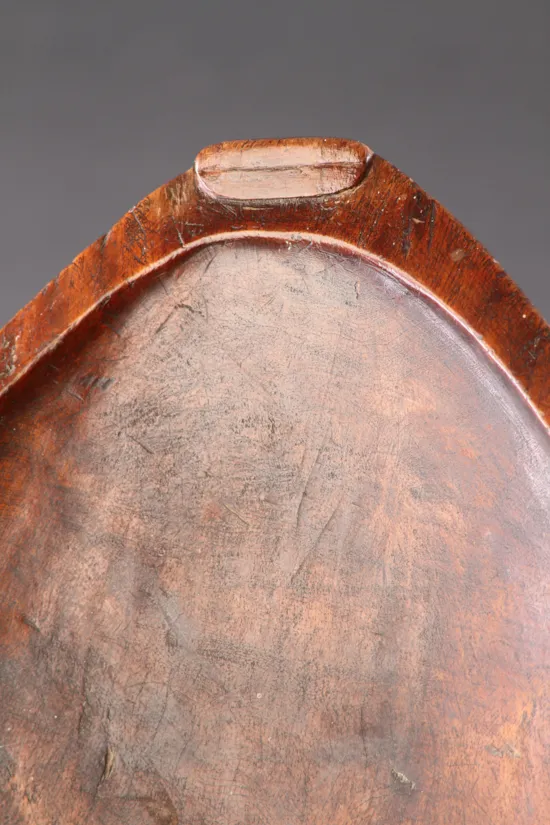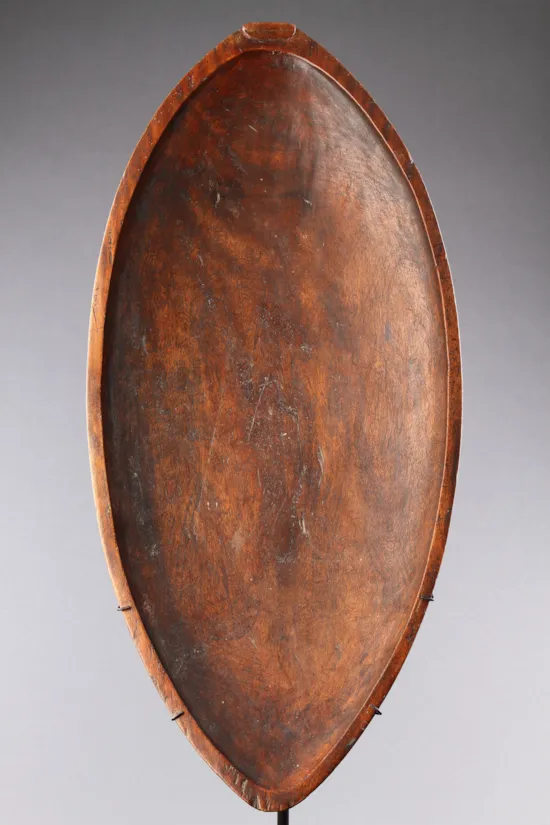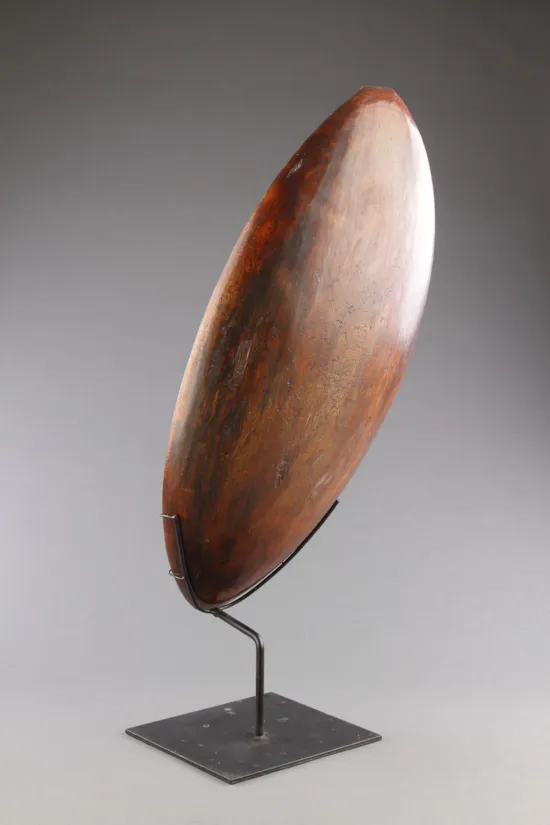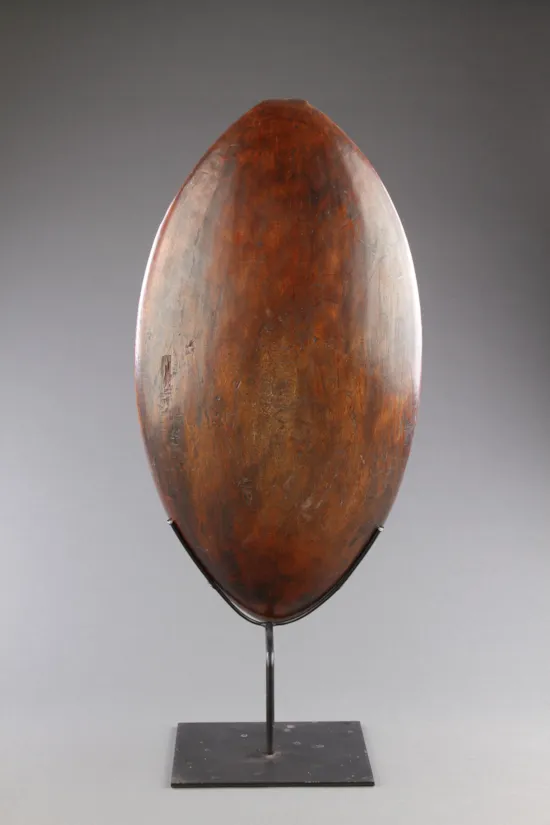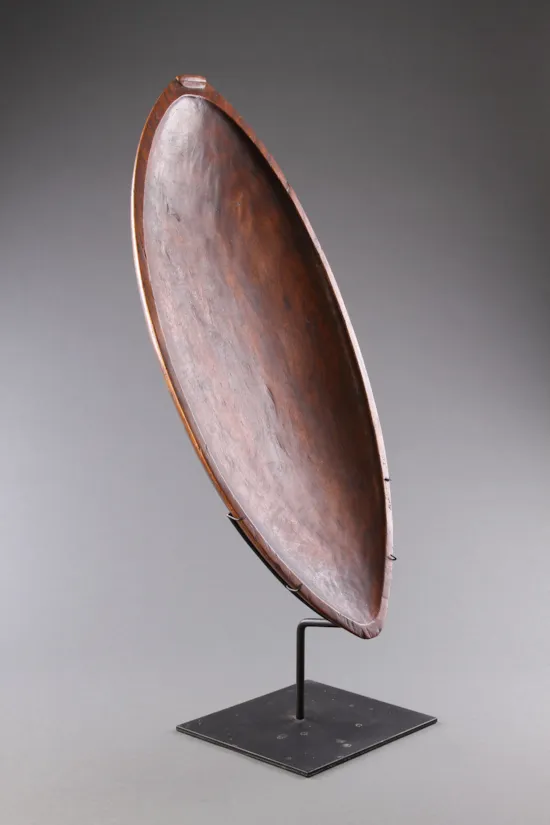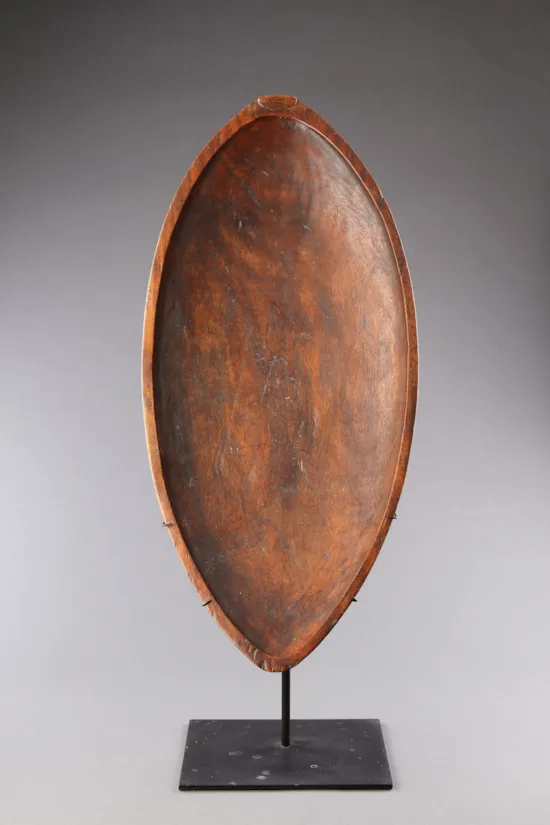Rare Polynesian Austral Islands Stone Carved Shallow Leaf Shaped Dish ‘Umete’
A Fine and Rare Polynesian Austral Islands Stone Carved Shallow Leaf Shaped Dish ‘Umete’ with a raised lug to one end
Tamanu ‘Collophyllum Inophyllum’ Wood
Glossy smooth honey coloured brown patina
18th Century
Size: 76cm long, 35cm wide, 8cm high - 30 ins long, 13¼ ins wide, 3 ins high
Tamanu ‘Collophyllum Inophyllum’ Wood
Glossy smooth honey coloured brown patina
18th Century
Size: 76cm long, 35cm wide, 8cm high - 30 ins long, 13¼ ins wide, 3 ins high
A Fine and Rare Polynesian Austral Islands Stone Carved Shallow Leaf Shaped Dish ‘Umete’ with a raised lug to one end
Tamanu ‘Collophyllum Inophyllum’ Wood
Glossy smooth honey coloured brown patina
18th Century
Size: 76cm long, 35cm wide, 8cm high - 30 ins long, 13¼ ins wide, 3 ins high
Tamanu ‘Collophyllum Inophyllum’ Wood
Glossy smooth honey coloured brown patina
18th Century
Size: 76cm long, 35cm wide, 8cm high - 30 ins long, 13¼ ins wide, 3 ins high
Less is known of the Austral Islands traditional culture than of any other Polynesian Islands. The fatal diseases introduced by the missionaries shattered local communities and reduced the population by about 90 per cent of the their former size. By 1828 there was no one left on Rurutu Island with any real experience of carving artefacts. Thus the ‘golden age’ of Austral Islands carving was very short-lived. It had began in 1820 when the Islands were well populated, not all of whom were engaged in carving, but from the evidence of present day museum collections there was a large number of craftsmen producing beautifully carved paddles, bowls and other artefacts for sale to the visiting merchant traders, whaling vessels and missionaries. Over the next two decades the population went into a stunning cataclysmic decline with nine out of ten people dying between 1821 and 1846 when around thirty men were left who preserved traditional skills and practices.
The introduction of metal tools and nails helped and allowed this brief, but dramatic efflorescence in Austral carving. The profusely ornamented artefacts finding a ready market amongst the visitors to the Islands. Before the beginning of the 19th century much was left plain with subtle partly carved shapes as the wood was stone carved. W. Ellis in his ‘Polynesian Researches’ (1829II:181) states that dishes such as this example were used to rinse the hands before eating. Food was also served and eaten from wooden dishes of varying sizes each with a distinctive oval shape and with a raised projection on the rim at the wider end. So it is probable that these dishes were used for both purposes.
The introduction of metal tools and nails helped and allowed this brief, but dramatic efflorescence in Austral carving. The profusely ornamented artefacts finding a ready market amongst the visitors to the Islands. Before the beginning of the 19th century much was left plain with subtle partly carved shapes as the wood was stone carved. W. Ellis in his ‘Polynesian Researches’ (1829II:181) states that dishes such as this example were used to rinse the hands before eating. Food was also served and eaten from wooden dishes of varying sizes each with a distinctive oval shape and with a raised projection on the rim at the wider end. So it is probable that these dishes were used for both purposes.
Ex English Private collection
cf: Oldman Collection 1943 Plate 24, no. 454 and another similar sold in Drouot, Paris, December 9th 1989 Lot 85
cf: Oldman Collection 1943 Plate 24, no. 454 and another similar sold in Drouot, Paris, December 9th 1989 Lot 85
Rare Polynesian Austral Islands Stone Carved Shallow Leaf Shaped Dish ‘Umete’
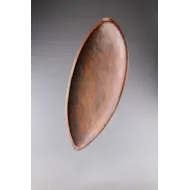
SOLD
